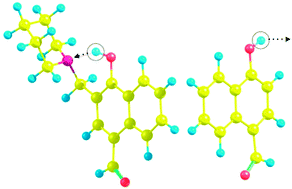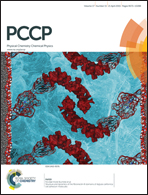4-Hydroxy-1-naphthaldehydes: proton transfer or deprotonation†
Abstract
A series of naphthaldehydes, including a Mannich base, have been investigated by UV-Vis spectroscopy, NMR and theoretical methods to explore their potential tautomerism. In the case of 4-hydroxy-1-naphthaldehyde concentration dependent deprotonation has been detected in methanol and acetonitrile. For 4-hydroxy-3-(piperidin-1-ylmethyl)-1-naphthaldehyde (a Mannich base) an intramolecular proton transfer involving the OH group and the piperidine nitrogen occurs. In acetonitrile the equilibrium is predominantly at the OH-form, whereas in methanol the proton transferred tautomer is the preferred form. In chloroform and toluene, the OH form is completely dominant. Both 4-hydroxy-1-naphthaldehyde and 4-methoxy-1-naphthaldehyde (fixed enol form) show dimerization in the investigated solvents and the crystallographic data, obtained for the latter, confirm the existence of a cyclic dimer.



 Please wait while we load your content...
Please wait while we load your content...